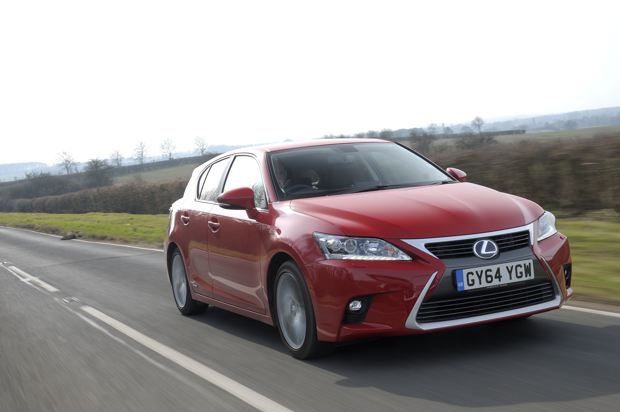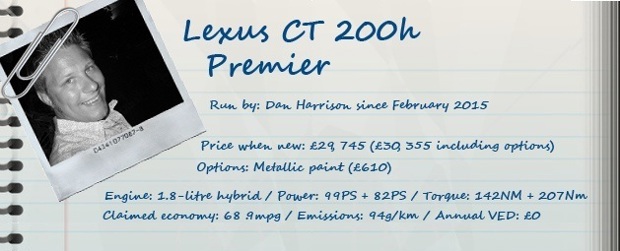Our Lexus CT200h arrives
Another hybrid joins the Honest John Our Cars fleet - this time in the guise of the Lexus CT200h.
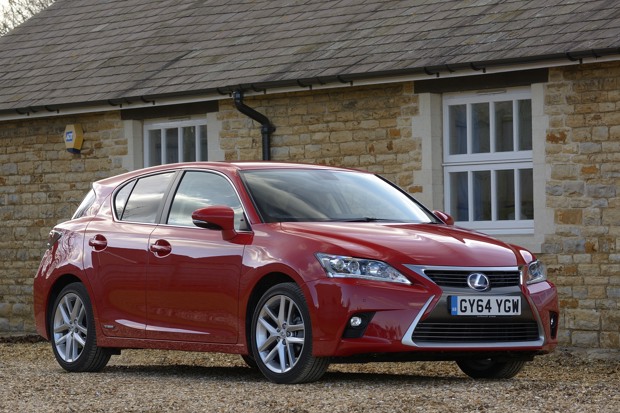
Date: 2 March 2015 | Current mileage: 286 | Claimed economy: 68.9mpg | Actual economy: 51.2mpg
The CT200h is a bit of a sleeper - and I’m not talking about the quiet hybrid engine. It’s one of those models that has slipped under the mainstream radar but is also one of the cars that springs to mind when one of your key requirements is for ‘something a bit different’. It’s not a car that you’d immediately think of when buying something like a BMW 1 Series or Audi A3, but is rather a leftfield choice. For those unfamiliar with the car, think of it as an upmarket Prius. The idea is the same - low emissions from a petrol engine coupled to a hybrid electric motor - but the image is more upmarket.
It’s still a reasonably rare sight on the road and that means it gets a fair bit of attention, whether that’s in the car park or out on the road. A surprising amount in fact. It’s different enough to the conventional choices to make people take a second look, helped along by last year’s facelift (more on that later). Many people than I thought must be adding it to their shopping list, as it’s actually Lexus’s best selling model in the UK.
The colour that I’ve gone for helps in that regard. This striking fire engine red won’t be to everyone’s taste, but combined with the chrome front grille, it certainly helps it stand out.
Why the CT200h. Well, I don’t have kids or the need for a huge amount of space, so small hatches like this suit me down to the ground. I’ve previously run a petrol Volkswagen Golf and a diesel Audi A3 - both have offered a great combination of long distance comfort, dynamism on back roads and decent fuel economy. So it will be interesting to see how this Lexus stacks up. Previously, the CT200h’s USP has been its hybrid drive, but now both Audi and Volkswagen have hybrid or fully electric versions either on sale now or in the very near future, so there’s increased competition from mainstream rival before you even consider whether diesel is a better option (spoiler alert: unless you’re doing 15k a year or more, it isn’t).
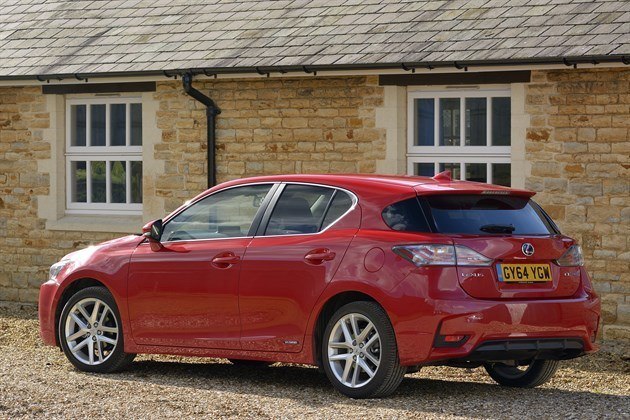
Fire engine red paintwork means the CT200h stands out
So, that facelift - what was the story? Well, Lexus says that there were hundreds of minor improvements over the car that was launched back in 2010, but there are plenty of eye-spy points on offer if you can spot them. It’s business as usual for the overall squat, wide stance and shape, but if you were to look under the skin (and know where to look), you’ll find that more than 20 new spot welds have been added, with the aim to increasing rigidity and making it more accomplished out on the road. Combined with slightly softened dampers, it’s designed to give a compliant - rather than wallowy - ride and improved cornering ability. Better software should help and the CT200h has been reprogrammed so that the CVT gearbox offers smoother gearchanges, without sacrificing the all-important low emissions. In fact, they’ve fallen for this facelift - go for one on 15-inch wheels and output has fallen from 94g/km to 88g/km. On our CT200h with larger 16-inch wheels (which are more suitable for a car of this size), it’s 94g/km.
Inside the cabin has had a mild overhaul with new trim, better quality materials and - most noticeably - a 4.2-inch TFT touchscreen screen as standard. I’m fully expecting the cosseting cabin to be one of its strengths, especially on longer motorway jaunts. The leather seats are big, supportive, heated and the controls seem well laid out. I like the idea of the low-set driving position, too. Equipment is good with DAB radio as standard, a single-disc DVD player, LED headlights with cleaning system, cruise control, electrochromic auto-dimming rear view mirror, keyless entry, electric front seats HDD satellite navigation and a reversing camera.
A question mark remains over boot space and the amount of room that the battery takes up, leaving a mere 344 litres for shopping and not much for anything else. But will that be a problem in everyday life? Time will tell...
Is keyless clueless?
Is it just me or are the now commonplace keyless entry systems more trouble than they're worth?
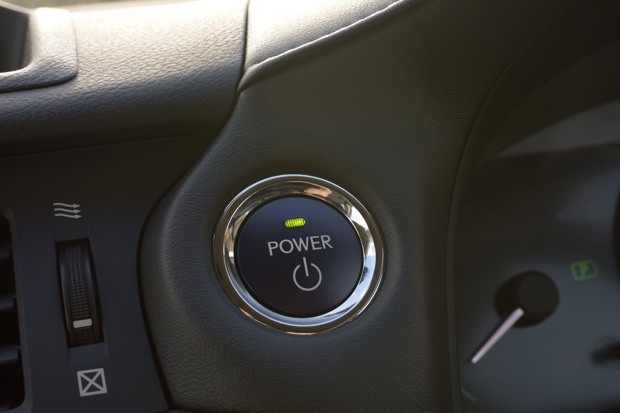
Date: 19 March 2015 | Current mileage: 851 | Claimed economy: 68.9mpg | Actual economy: 53.4mpg
I can’t be the only person who finds keyless entry more trouble than it’s worth. I’ve never really got on with it and it’s not different with this Lexus.
It must be the breaking of the simple routine of putting the ignition on, but I find that because I don’t need to physically use the key to enter or start the car, I end up misplacing it. I never actually lose it, but at the same time I don’t really know where it is. It could be a trouser pocket. Or a coat pocket. The bottom of my bag or - and this usually happens when I think the key is in my bag and it’s raining - inside the house somewhere. But not on the keyhook where it should be.
I never have this issue with a traditional key. That simple process of turning off the car, getting out and locking it with the fob means it’s in my hand when I get home and from there it goes on the keyhook, ready for the next day. But when the key isn’t needed to lock or start the car, that routine is lost and that’s when I start scrabbling around to find it.
The problem - and by that I mean my own absent-mindedness - has been partly solved with a keyring called ‘Tile’ which is attached to my keys. Remember the ‘whistle’ keyfobs from the 1980s? It’s essentially a modern-day version of that. Once paired with a phone via Bluetooth, Tile will locate your keys and the keyring will play a little jingle if in range. If further away, it will locate your keys on a map and show where they were last spotted.
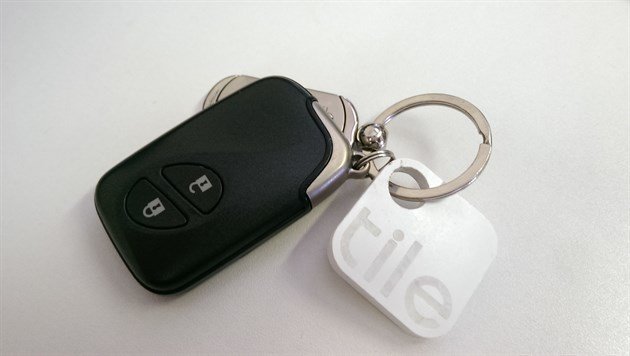
Dan's clever Tile often comes to the rescue
While Tile comes in useful for those moments when I’m in a rush and can’t find my keys but, in all truthfulness, I’d prefer a standard key. I’m no Luddite, but I don’t like innovations when they don’t significantly improve the current offering and I don’t think keyless is as much of an improvement as car makers would like to think. The move to remote central locking from manually putting a key in a lock was a clear improvement, but the benefit of keyless isn’t as immediately obvious - a bit like re-designing the steering wheel.
And these systems also raise more serious questions about security. How easy is it to clone a key and enter a car - and get it started - without having to physically break-in, as you would with a conventional system? Last year the US National Insurance Crime Bureau (NICB) said that it had seen a "spike" in car thefts where the thieves had cloned the keyless entry system.
This side of the Atlantic, the Metropolitan police say that around half of all car thefts in London are carried out without the use of any original keys and organised criminals are actively targeting high-end models with the aim of smuggling them out of the country and selling abroad. It seems to be an increasing problem as keyless systems are fitted to an increasingly wide range of cars, though there’s no evidence - either in data or anecdotally - that Lexus is among those vulnerable models, but the technology to steal a car without raising any suspicion is out there.
The best way to protect yourself is to stay one step ahead of the criminals. That means following the basics - i.e not making your car an attractive target, keeping it locked in a garage where you can and - if your car is popular with thieves - going back to basics and using a disc lock on the steering wheel. With keyless entry specifically, you should also make sure that your dealer applies any updates that are needed to the software. It’s much like anti-virus software on your computer and the criminals are always one step ahead. Making sure any loopholes in the software are closed will give you added protection - as one is closed another opens…
Taxing issues
It's sold with the emphasis on low emissions and green credentials, but is the CT200h still a tax-efficient choice?
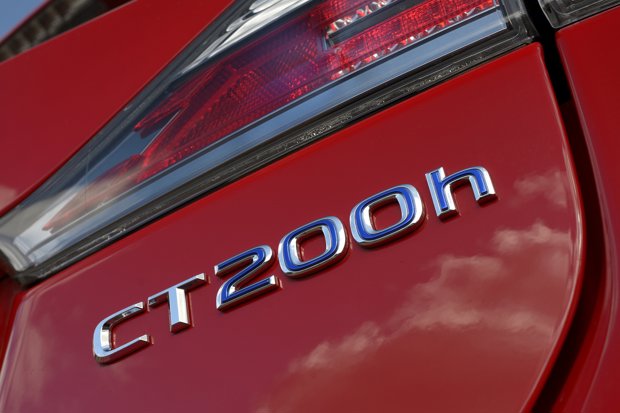
Date: 8 April 2015 | Current mileage: 1298 | Claimed economy: 68.9mpg | Actual economy: 54.4mpg
The CT200h has been stripped of one of its key USPs in recent years - being exempt from the London Congestion Charge. Although anyone who bought one from before the threshold changed from 100g/km to 75g/km has a grace period until 24 June 2016, anyone who has bought a CT200h since late June 2013 has had to pay the full congestion charge.
For anyone commuting into the zone, it means an annual bill of £2645 (assuming that the congestion charge is paid 230 days per year at the Auto Pay rate of £10.50).
Underneath the CT200h, you’ll find much of the Toyota Prius’s underpinnings, with one key omission - plug-in charging. That’s a shame as the option of a plug-in for Prius has taken the model onto the next step, bringing CO2 emissions down to 49g/km and making it one of just a handful of cars that are exempt from the Congestion Charge. The range on electric-only isn’t too much to write home about - just 15.5 miles if you take it easy - but it does bring down costs and give you the ability for for tailpipe-emissions-free miles and from just a 90 minute charge from a conventional (i.e not fast charge) plug.
So while the CT200h may have lost one of its benefits as far as Londoners are concerned, those around the country are still able to benefit from low company car tax (or BIK). The "appropriate percentage" charge is 13 per cent, which means on its P11D value of £29,690 it will cost £771.80 per year if you’re a standard rate tax payer and £1543.60 if you pay at the higher rate. Broken down by month that’s £64.32 and £1543.60 respectively. That’s an impressively low figure for a car of this size and in this market.
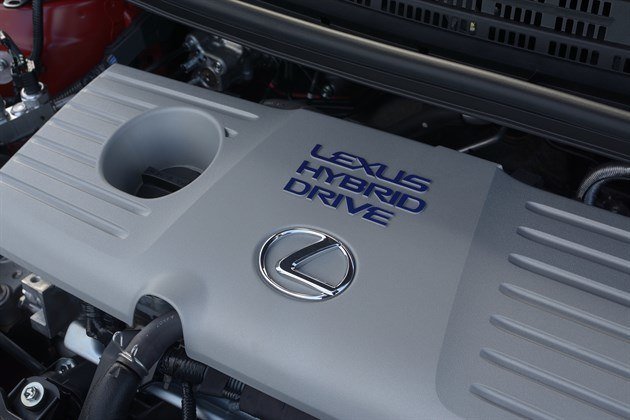
The view under the bonnet of the CT200h. Yes, it's quite dull...
But there’s more to to recommend the CT200h as a company car than figures on a piece of paper. It’s quiet at speed, smooth and incredibly comfortable. The seats are particularly noteworthy, as they’re supportive of both the lower back and shoulders plus well up to the task of mega motorway miles. Electrically-adjustable too. Chilly winter months means that the heated seats (which can be finely adjusted with a dashboard-mounted dial) have been particularly welcome.
The driving position is worth a mention too. As well as a great seat, the dials and instruments are well laid out and the TFT display is easy to read on the move. While the forward view is superb, the styling cues at the rear of the car restrict visibility, especially over-the-shoulder on the left.
Once again technology is on-hand at lower speeds so this isn’t so much of an option. The wide TFT display switches to become the monitor for the reversing camera and adds some guide-lines to make sure that your parking is spot-on. Aside from being able to park itself, it’s all pretty fool-proof, as long as you keep the car clean. Salt and grime from the road has a habit of covering the small camera lense on the boot and obscuring the view.
You’ll look smart turning up at a meeting in the CT200h, too. Mine is especially striking in red, but even in more subdued colours it looks distinctive and always elicits questions ranging from "What is it?", to "is it essentially a Prius underneath?" from those who are more in the know. The styling for the Premier has been subtly upgraded with last year’s facelift, with the addition of the more aggressive ‘spindle’ grille already seen on the GS and IS along with redesigned front and rear bumpers. Opt for the racier F Sport model and there’s a shark-fin antenna, more prominent rear spoiler and 17-inch alloys. S on the other hand tones everything down with tiny 15-inch wheels and aerodynamic trims.
What do you think?
There's something of a mixed reception for the Lexus CT200h in our Owner Reviews section.
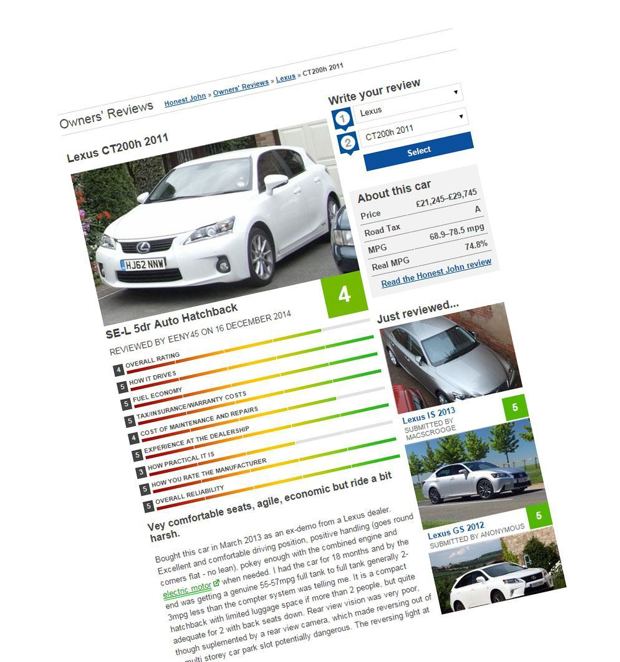
Date: 29 April 2015 | Current mileage: 1862 | Claimed economy: 68.9mpg | Actual economy: 54.6mpg
Our owner reviews often give a fascinating glimpse on what it’s like to own a car day-in, day-out. I’m always intrigued to see if my experiences match up with everyone elses. Every now and then, there’s more of a story than the overall average score that our owners give a car. The CT200h is one of those cars.
On paper it has an overall score or 3.7, but that marginally above-average rating hides what is really happening. Instead of owners thinking that the CT200h is mediocre and meriting that 3.7 score, they are either loving it and rating it 5/5 or hate it and giving it one or two out of five.
Here are some of the positive comments:
"I bought this car in March 2013 as an ex-demo from a Lexus dealer. Excellent and comfortable driving position, positive handling (goes round corners flat - no lean), pokey enough with the combined engine and electric motor when needed. I had the car for 18 months and by the end was getting a genuine 55-57mpg full tank to full tank generally 2-3mpg less than the computer system was telling me. It is a compact hatchback with limited luggage space if more than 2 people, but quite adequate for 2 with back seats down."
"We've traded in our uber-reliable BMW 116i for this, and so far, we're over the moon. It's got every mod-con we could hope for. It's also got enough of a poke of rort for when we want to overtake anything. But, most of the time, we can pootle along with the eco selection selected knowing we're saving the planet; one penguin at a time."
"Good move by dealer, took my 10 year GS 300 for service, loaned me CT200h for the day. Wife loved it, especially the smart entry system (never finds keys in handbag!!). Then arrange to borrow for a weekend, wife was sold on it. Has all the space we need, in fact very surprised what you can fit in it (assisted moving one of my kids!). Great round the country lanes and in town up to 57.6mpg, especially when it drops in to electric mode, very quiet. When it comes to hybrid, you have to learn another way of driving, like pump & cruise on motorways to get 49/51mpg."
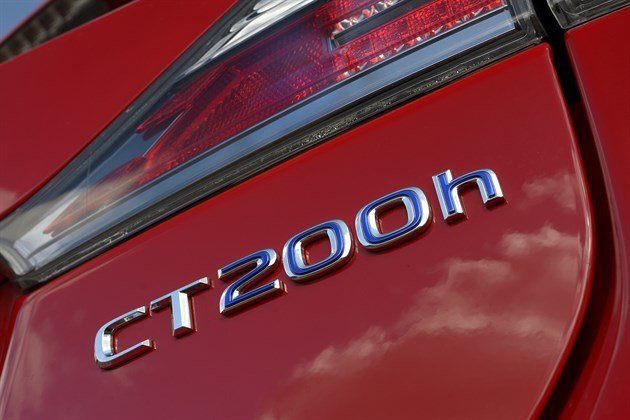
Whereas these are the gripes of those who aren’t quite so happy...
"Just taken delivery, it's good for company car tax which is why it was chosen. Very poor dealer experience. The front seats are good and there's enough storage, the back seat and boot space is tight, easy to drive but uninvolving. Very well specified but too complicated. The car feels underpowered against a diesel but that's not the point of this car, it's also fairly noisy at motorway speeds."
"I'm a chauffeur and work through an agency driving other people’s cars. Last week I drove one of these mini-Lexus for the first time. I was absolutely astounded about the poor quality of the ride. It's the worst car I have driven this year. The ride was so harsh that I had to slow down on a westward drive along the M4 from London."
“I inherited this from another user so not my choice. It's low company car tax threshold because of its green credentials mean that you get a lot of kit for a lower tax charge. The kit is very good once you are used to it and have tailored it by removing some of the annoying default settings. The sat nav does work reasonably well even if loading a UK post code takes more clicks than it should. I was hoping to get a DAB element to the stereo but that is not the case with my model. Auto headlights and wipers do the job well and I particularly like the clarity of the xenon headlights. The hands free phone and ability to download your phone contacts is also very good. The foot operated parking brake caused me some embarrassment when I accidentally engaged it on the second day of having the car. Not knowing about it meant I tried driving the car and couldn't. After half hour waiting for Lexus Assist to come to my aid, detailed review of the enormous handbook revealed the problem! I sheepishly cancelled Lexus Assist before they turned up."
It’s seems to be one of those cars that divides opinion. Over in our Real MPG section, it’s another mixed bag, drivers get a range of 44.5mpg to59.8mpg from their driving, which equates to 75 per cent of the official fuel consumption figure of 68.9mpg. The industry average at the moment is 86 per cent of the official figure. I, on the other hand am regularly achieving 65mpg, though my journeys do tend to be biased towards longer motorway trips.
Them’s the (tax) breaks
The recent Budget has just made buying a hybrid a little less attractive.

Date: 12 July 2015 | Current mileage: 3120 | Claimed economy: 68.9mpg | Actual economy: 54.7mpg
First it was the Congestion Charge discount and now it’s Road Tax - or Vehicle Excise Duty to give it its proper name. The tax breaks for running a hybrids are evaporating fast.
Hybrids have taken a bit of hiding in this year’s Summer Budget and the 94g/km CT200h is one of those to get clobbered hardest. The Chancellor has torn-up the system that rewarded cars with low CO2 emissions and replaced it with a flat tax of £140/year after the first year (with a £310 supplement per year for any vehicle costing £40,000).
The reason is that the system that encouraged car manufacturers to produce ever more efficient cars was just a little too successful, with vast amounts of cars falling into bands A, B and C and qualifying for low VED. And, crucially, choking a revenue stream that the Exchequer has become accustomed to.
The graph below, published by the Treasury in the Finance Bill, shows just how dire the situation has become. With ever larger cars qualifying for hugely discounted Road Tax (including larger Audi, Mercedes-Benz and BMW models), a large majority of cars were moving out of expensive VED bands and into the cheaper ones. It was the 2006 Budget - under Gordon Brown - that first introduced the zero VED. Back then, there were less than 1000 cars on the road that qualified (most of them the original Honda Insight) and even an average small car produced upwards of 120g/km of CO2.
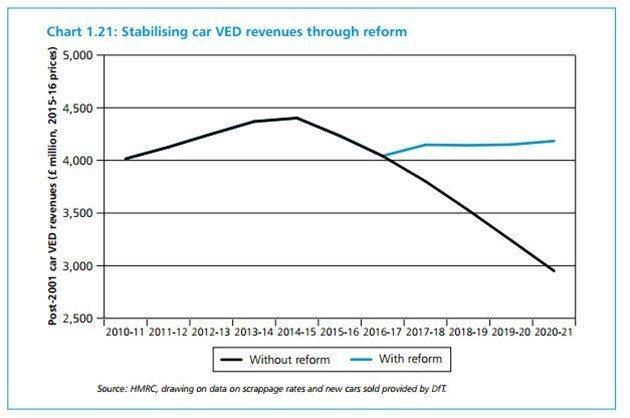
Comparison of Road Tax for a 94g/km CT200h from 2017
|
Year 1 |
Year 2 |
Year 3 |
Year 4 |
Year 4 |
Year 5 |
Total |
|
|
Current system |
£0 |
£0 |
£0 |
£0 |
£0 |
£0 |
£0 |
|
New System |
£120 |
£140 |
£140 |
£140 |
£140 |
£140 |
£680 |
All-electric zero tailpipe emissions cars like the Renault Zoe and Nissan Leaf will continue to be exempt from Road Tax (and enjoy other tax breaks), but hybrids - whether plug-in or standard - have fared badly. There is a caveat and that is these changes will only apply to cars registered from April 2017 - they are not retrospective. That means that this CT200h will continue to enjoy similar low VED rates to what it does today.
These vanishing tax breaks are likely to have an impact on future hybrid sales, residuals for cars close to the changeover date and create a rush in early 2017 to get a car registered under the new system.
The financial argument (rather than the environmental) has been strong for hybrids in the past decade. You only have to look at the number of sales in and around the London area and how it has become a residual value hotspot to see that people have been encouraged to buy them because of the tax incentives. But what will the future hold for hybrids - especially those costing more than £40,000 - now that that the benefits are set to be removed? Will people still be drawn to them for ‘environmental’ reasons or because of the quieter drivetrains.
Hybrids have always been positioned by manufacturers as a stop-gap between moving from conventional petrol and diesel engines towards power units not entirely reliant on oil. Obviously the UK is only one market and VED is only one tax, but if other countries were to follow suit and start removing tax incentives for hybrids, which direction will that take manufacturers and the future cars that they produce? Some are pushing ahead with hydrogen fuel cell technology, while others are putting their efforts into better batteries and electric drivetrains.
Although the move back toward a flat rate of VED is a simple one, it could in fact be part influence the kinds of cars that we’re buying for the next 10-15 years.

